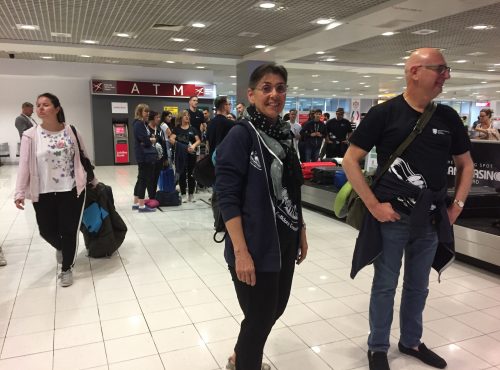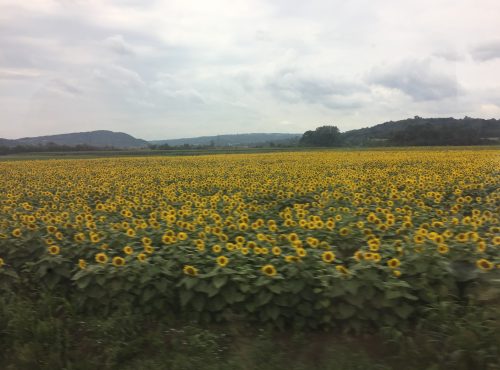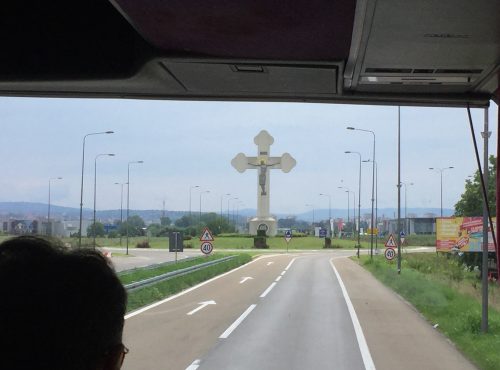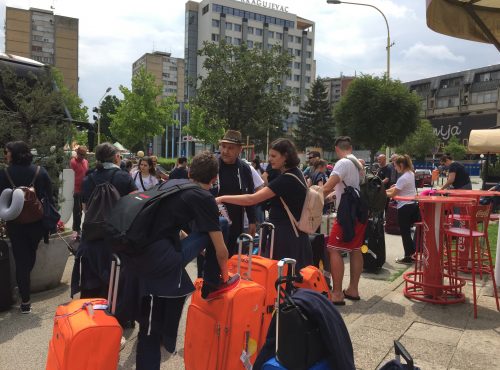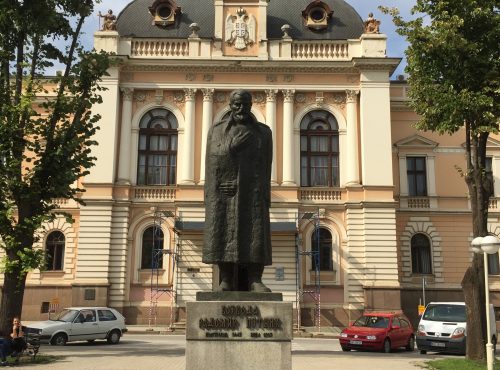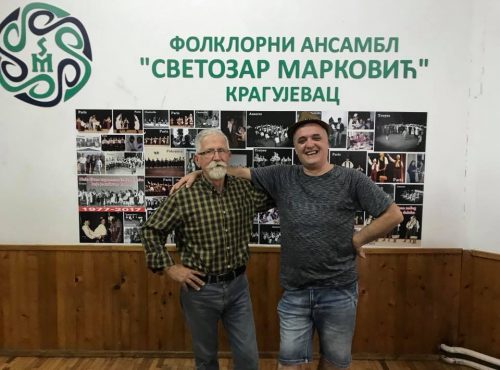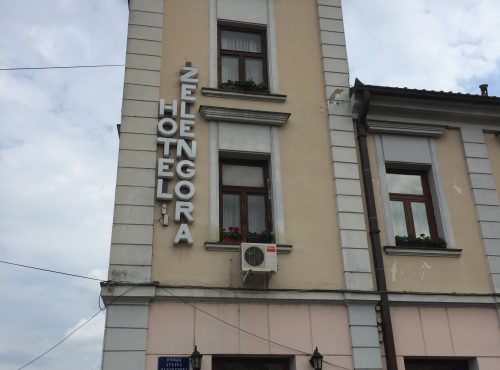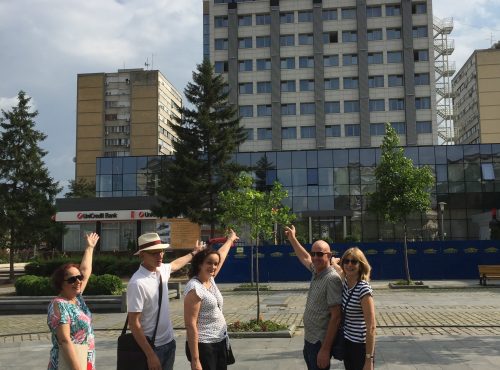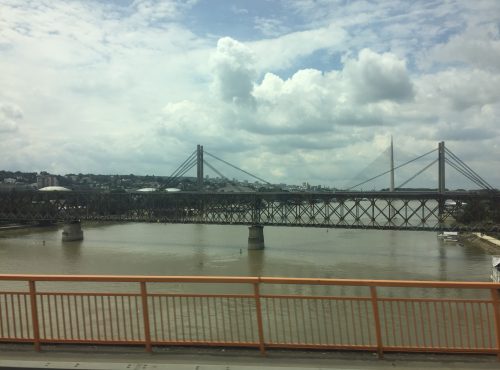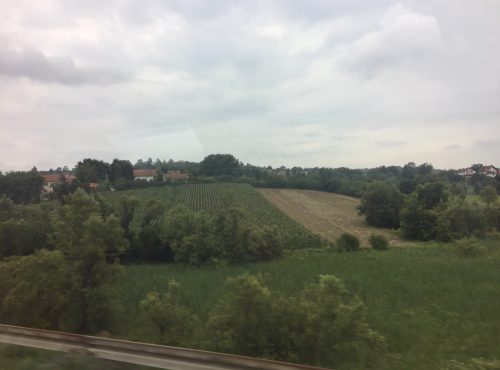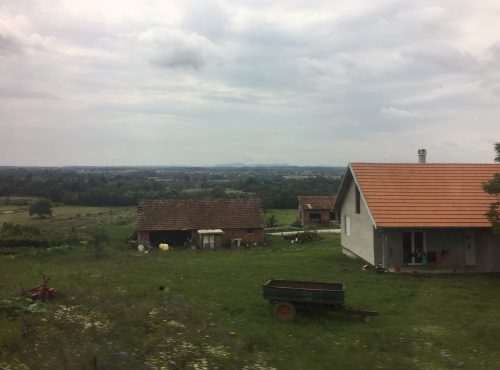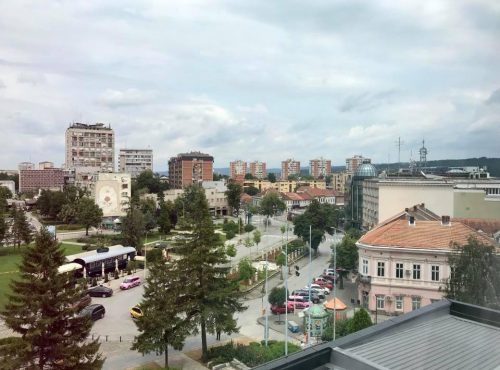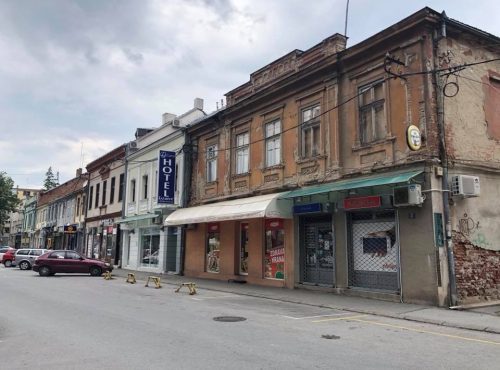We have had an amazing FIRST DAY of our tour. After the longest journey to arrive (4 hour prior to flight check in for costume inspection with customs ~ 18 hour flight to Doha ~ 7 hour lay over in Doha ~ 5 hour flight to Beograd ~ 2 hour bus trip to Kragujevac) we finally made it. When we arrived in KRAGUJEVAC it was around 2pm local time. We had around 2 hours to check in to our hotel, unpack and get something to eat before we were off to practice with the live musicians Nenad has organized for us here in Serbia. Even though we were exhausted, practice was amazing. We got to meet Nenad’s own kolo tutor Čiča and we danced alongside his former kolo group. We got fitted for the beautiful Glamoč costumes we are borrowing and collected our brand new opanke made just for us. After practice we headed back to our hotel and everyone collapsed in to bed, ahead of an exciting day tomorrow!! – Mara Blucher
More about our location
As we left Belgrade we drove parallel to the Danube, then continued southwards. We passed through lush green countryside with small fields of corn, pasture, various crops and sunflowers. We passed a large plume of white in the distance, which was likely from the iron and steel plant at Železara Smederevo on the banks of the Danube. Getting closer to our destination Nenad told us some of the history. Kragujevac, a city of 180,000 on the banks of the Lepenica River, was the first capital of Modern Serbia from 1818-41. It is in the geographic centre of the country and the name means ‘hawk’s nesting place’.
The town was liberated from the Ottomans in 1804 during the First Serb Uprising, gaining full negotiated liberation in 1815. This was followed by Prince Miloš Obrenović naming it the capital of the new Serbian state in 1818. A military and technical institute developed, and military plants were built from 1836. A cannon foundry began production in 1851 which was a turning point in the economic development of the city.
The growth of the city was a story of many ‘firsts’ in Serbia. The first Serbian constitution in 1935, the first workers’ demonstrations in 1876, Serbia’s first secondary school, pharmacy and printing press.

